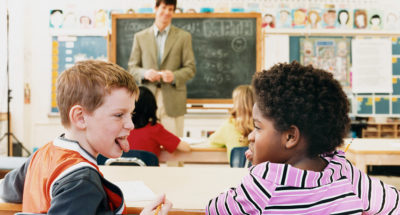
Helping Students to Do Better Next Time
Students list ways they can fix situations where they said or did the wrong thing and then generate ideas for how they make sure they don’t engage in the behavior again.

Students list ways they can fix situations where they said or did the wrong thing and then generate ideas for how they make sure they don’t engage in the behavior again.
Students will:
To better understand this practice, please read the “Reflection Before the Practice” and the “Research Behind It” sections first.
Midgette, A. (2018). Children’s strategies for self-correcting their social and moral transgressions and perceived personal shortcomings: Implications for moral agency. Journal of Moral Education, 47(2), 231-247. DOI: 10.1080/03057240.2017.1396965
Do you notice if students are more often taking it upon themselves to make amends when they say or do the wrong thing rather than relying on adults to tell them what to do?
Scientists have found that students as young as six actively make amends for their misbehavior, in addition to focusing on personal improvement and learning to avoid wrong behaviors. Studies show that children are also capable of aligning their method of repair with the type of offense, whether moral or conventional in nature.
Developing students’ self-efficacy, or the belief that they can succeed in a task, is critical to healthy child development. Hence, when students are directly involved in rectifying their own misbehavior along with adjusting their shortcomings, they are cultivating a sense of agency around their ability to resolve difficult social interactions and growing their identity as capable social and moral agents.
Rather than directly telling students how to behave and fix their misbehavior — as some school-wide curricula and programs do — adults should engage students in discussions that help bring out students’ natural propensities for assessing their own behavior and self-correction.

Do you want to dive deeper into the science behind our GGIE practices? Enroll in one of our online courses for educators!
Comments